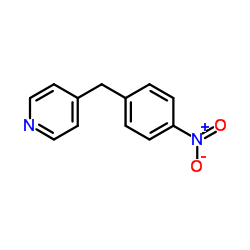Sorbate-nitrite interactions: acetonitrile oxide as an alkylating agent.
M Teresa Pérez-Prior, Rafael Gómez-Bombarelli, Marina González-Pérez, José A Manso, M Pilar García-Santos, Emilio Calle, Julio Casado
Index: Chem. Res. Toxicol. 22(7) , 1320-4, (2009)
Full Text: HTML
Abstract
Because chemical species with DNA-damaging and mutagenic activity are formed in sorbate-nitrite mixtures and because sorbic acid sometimes coexists with nitrite occurring naturally or incorporated as a food additive, the study of sorbate-nitrite interactions is important. Here, the alkylating potential of the products resulting from such interactions was investigated. Drawn were the following conclusions: (i) Acetonitrile oxide (ACNO) is the compound responsible for the alkylating capacity of sorbate-nitrite mixtures; (ii) ACNO alkylates 4-(p-nitrobenzyl)pyridine (NBP), a trap for alkylating agents with nucleophilic characteristics similar to those of DNA bases, forming an adduct (AD; epsilon = 1.4 x 10(4) M(-1) cm(-1); lambda = 519 nm); (iii) the NBP alkylation reaction complies with the rate equation, r = d[AD]/dt = k(alk)(ACNO)[ACNO][NBP]-k(hyd)(AD)[AD], k(alk)(ACNO) being the NBP alkylation rate constant for ACNO and k(hyd)(AD) the rate constant for the adduct hydrolysis reaction; (iv) the small fraction of ACNO forming the adduct with NBP, as well as the small magnitude of the quotient (k(alk) (ACNO)/k(hyd)(ACNO)) as compared with those reported for other alkylating agents, such as some lactones and N-alkyl-N-nitrosoureas, reveals the ACNO effective alkylating capacity to be less significant; (v) the low value of the NBP-ACNO adduct life (defined as the total amount of adduct present along the progression of the NBP alkylation per unit of alkylating agent concentration) points to the high instability of this adduct; and (vi) the obtained results are in accordance with the low carcinogenicity of ACNO.
Related Compounds
| Structure | Name/CAS No. | Molecular Formula | Articles |
|---|---|---|---|
 |
4-(4-Nitrobenzyl)pyridine
CAS:1083-48-3 |
C12H10N2O2 |
|
Colorimetric assays for quantitative analysis and screening ...
2005-12-01 [Biotechnol. Lett. 27(23-24) , 1921-7, (2005)] |
|
2,4-dihydroxy-7-methoxy-2H-1,4-benzoxazin-3(4H)-one (DIMBOA)...
2015-12-02 [Int. J. Food Microbiol. 214 , 123-8, (2015)] |
|
The relationship between reactivity of metabolites of pyrrol...
1999-01-01 [Proc. West. Pharmacol. Soc. 42 , 13-6, (1999)] |
|
Clinical pharmacokinetics of cyclophosphamide and metabolite...
1994-12-15 [Cancer Res. 54(24) , 6421-9, (1994)] |
|
Mutagenicity of bisphenol A (4,4'-isopropylidenediphenol) in...
2002-01-01 [Teratog. Carcinog. Mutagen. 22(6) , 425-41, (2002)] |